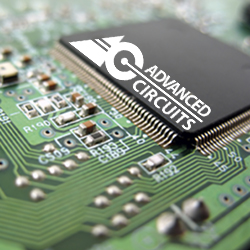The Basics of Printed Circuit Board Assembly

Printed circuit board assembly, also known as “stuffing” or “populating the bare printed circuit board is quite an intricate process involving many different phases. AdvancedPCB in house printed circuit board assembly service makes ordering your turnkey printed circuit boards a hassle-free experience because you can rely on the industry’s largest support team to help you navigate every step of the process.
In this post, we define some of the basic elements involved in the printed circuit board assembly process. For a detailed list of PCB assembly requirements, frequently asked questions, and a helpful Assembly Checklist, please visit our Printed Circuit Board Assembly services page.
Solder Paste – Solder paste is a combination of flux, a chemical created to assist in the bonding and melting of the metal, and small fragments of metal (solder) in order to apply the electronic components to the printed circuit board. The paste is placed on the board in specific places along the board in exact amounts with the use of a Solder Stencil and a paste application machine, automatically. When an automatic machine is not available to you, it must be executed manually and with the utmost precision.
Pick and Place Machine – This machine is essential in an automated printed circuit board assembly process. The machine is programmed to automatically coordinate with complete accuracy the places to precisely mount each electronic component to be soldered to the printed circuit board. These machines are exact and quick. Human pick and place has a much higher potential for errors in addition to being a much slower, more tedious process.
Infrared Reflow – After the precise bonding element (solder paste) is applied to the PCB, the board will be directed to the reflow oven to join the electronic components to the board by melting the solder paste. This “oven” is comprised of many heaters whose main function is to heat the board to a precise temperature and control the level of cooldown as the solder hardens. This process is crucial to the creation of properly functioning electronics. The printed circuit board will run through a series of testing to ensure no issues or short-circuiting nor misalignments have occurred.
Thru-hole PCB Assembly – A method of soldering electronic components in place by hand using drilled holes in the printed circuit board and connecting pads. This technique creates a stronger physical bond of the component to the printed circuit board but is much more time consuming and the cost of the printed circuit board can increase due to the higher volume of drilled holes.

AdvancedPCB
Related Posts

Three Ways to Have PCB Assembly Done Right

The PCB Assembly Process and What You Should Know



